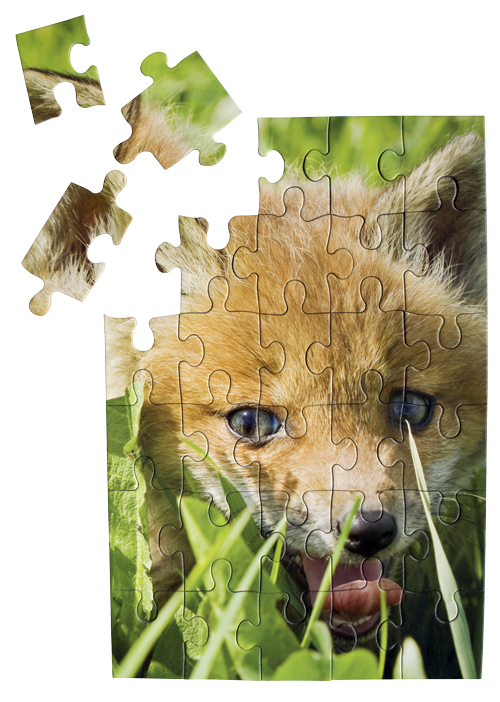Looking for 3 New Ways to Use Puzzles with Preschoolers? There is so much more to puzzles than pieces! We love these three preschool-friendly ways to teach math, language, and even fine motor skills with puzzles.
Each of these hands-on activities works perfectly with the cardboard puzzles that you receive every month in your preschool curriculum kit by Experience Preschool.
 Begin with puzzles that only have a few pieces (4-6 pieces). If the child is comfortable putting these puzzles together, then they are ready to try puzzles with 12 pieces and then later 24 pieces. Slowly increase the number of pieces the child has to manipulate as the child demonstrates independent mastery of the given amount. This is a great way to individualize the experience for the different levels in your preschool group.
Begin with puzzles that only have a few pieces (4-6 pieces). If the child is comfortable putting these puzzles together, then they are ready to try puzzles with 12 pieces and then later 24 pieces. Slowly increase the number of pieces the child has to manipulate as the child demonstrates independent mastery of the given amount. This is a great way to individualize the experience for the different levels in your preschool group.
Although the common way to play with a puzzle is to just dump all the pieces on the table and then put it together, there is so much more you can do. Try one of these new ideas and engage preschoolers.
Idea 1: Feed the Puppy (or any stuffed animal toy)
Begin with an assembled puzzle. Name a hidden feature and encourage the child to take that piece from the puzzle and feed it to the puppy. You can feed puzzle pieces to any animal or object. Just use whatever toy you have. Continue to describe features in any puzzle. The child finds and removes that piece to feed the puppy. Children love the make-believe aspect of this idea. For example, say:
- Puppy wants to eat a puzzle piece with the color white.
- Puppy wants to eat a puzzle piece with a cow’s foot.
This is a great listening comprehension and vocabulary building activity because it requires the child to understand and apply the meaning of the adjectives or nouns that you use in your description. It gives you an immediate opportunity to assess their understanding.
Idea 2: Dig for Puzzle Pieces
The second idea is to dig for puzzle pieces and focus on fine motor skills.
You can pretend the Farm Dog took puzzle pieces and dug holes to hide his new treasures. But now you need help finding the lost treasures! Simply hide the puzzle pieces in sand, flour, cornmeal or oats. Set out different tools such as tongs or spoons with holes. This requires the child to control his small muscles while hunting and digging up the puzzle pieces. The adventure story of hidden treasure will captivate the imagination of the child!
Idea 3: Using Numbers
Write numbers on the back of the puzzle pieces. If it’s a nine piece puzzle, label each piece with numbers 1-9. Encourage children to either find numbers in numerical order and line up the pieces. Or you could give simple math challenges:
- Can you find a puzzle piece with a number that is less than 3?
- Or roll one or two dice and find a puzzle piece with the same numeral on it as the amount of dots on the dice.
So today, before you play with puzzles, try an idea for how to add a story or tool to the process of taking apart or putting together the puzzle.